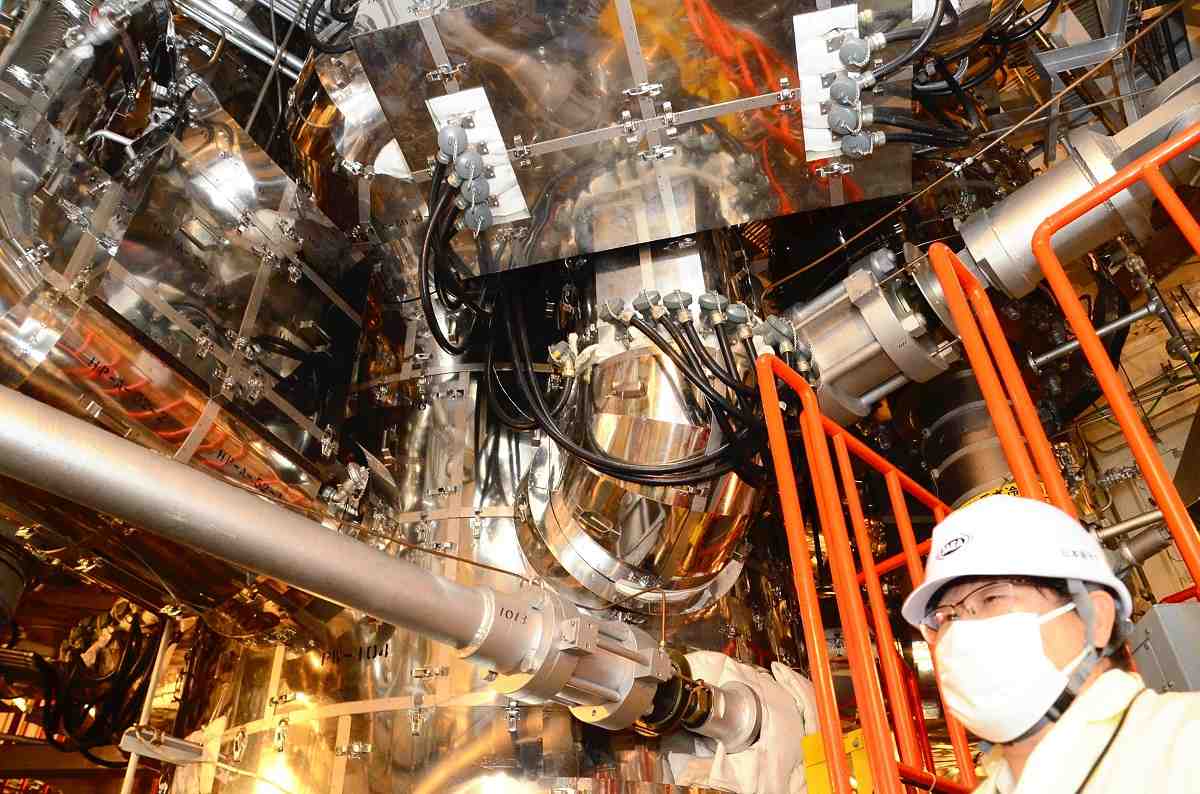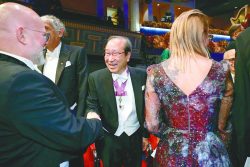Advanced Helium-Cooled Reactor to be Given Power-Loss Test; Aim is to Verify Safety of Reactor Shutdown System

The Japan Atomic Energy Agency’s High Temperature Engineering Test Reactor in Oarai, Ibaraki Prefecture, uses helium gas as its coolant.
18:20 JST, February 11, 2024
The Japan Atomic Energy Agency will next month conduct a test to verify a safety shutdown system for a high-temperature gas-cooled reactor (HTGR) in the event of a total loss of power during full operation by simulating the situation.
The test is to confirm that no core meltdown occurs even if the reactor’s cooling function is halted while the reactor is operating at 100% of its power output.
The agency aims to verify the safety of the next-generation nuclear reactor and use the test results as a stepping stone to putting HTGRs into practical use.
In addition to generating electricity, HTGRs can also produce hydrogen as a carbon-free energy source from the high-temperature heat emitted from nuclear fuel.
Reactors at most nuclear power plants are cooled by water, but HTGRs use helium gas for coolant. Helium is inert, meaning that in principle, no hydrogen explosion should occur. Even when the cooling function stops, the system naturally dissipates heat from reactors, ensuring a high level of safety.
The test will be conducted in late March at the agency’s High Temperature Engineering Test Reactor (HTTR) in Oarai, Ibaraki Prefecture.
The test will simulate a loss of power by intentionally stopping the circulation of helium gas. The temperature inside the reactor is expected to reach about 1,000 C during the test, but the HTGR fuel is designed to withstand heat of 1,600 C. The test will be aborted in the event of an abnormality to ensure safety.
By the end of fiscal 2021, the agency had conducted two tests to deliberately stop the cooling function during low-power operation at 30%. The temperature inside the reactor reached about 370 C, but the operation was safely shut down.
After confirming the safety of HTGRs in the planned test, the agency will hold full-fledged discussions with the Nuclear Regulation Authority regarding an application for installation permission to construct a hydrogen production facility.
“HTGRs are attracting worldwide attention as a means to realize a decarbonized society,” said Masayuki Shinozaki, who heads the agency’s HTTR Department. “We want to demonstrate their outstanding safety in the test.”
"Science & Nature" POPULAR ARTICLE
-

Mass Oyster Die-Offs Confirmed in Japan’s Seto Inland Sea; High Water Temperature Cited as Primary Cause
-

Genome Study Reveals Milestone in History of Cat Domestication
-

Big Leap in Quest to Get to Bottom of Climate Ice Mystery
-

Security Camera Footage Vulnerable to Outside Access; Investigation Finds 3,000 Pieces Exposed Online
-

Paws on Parade: Nairobi’s Dogs Dazzle at ‘Pawchella’
JN ACCESS RANKING
-

Keidanren Chairman Yoshinobu Tsutsui Visits Kashiwazaki-Kariwa Nuclear Power Plant; Inspects New Emergency Safety System
-

Imports of Rare Earths from China Facing Delays, May Be Caused by Deterioration of Japan-China Relations
-

University of Tokyo Professor Discusses Japanese Economic Security in Interview Ahead of Forum
-

Japan Pulls out of Vietnam Nuclear Project, Complicating Hanoi’s Power Plans
-

Govt Aims to Expand NISA Program Lineup, Abolish Age Restriction
























